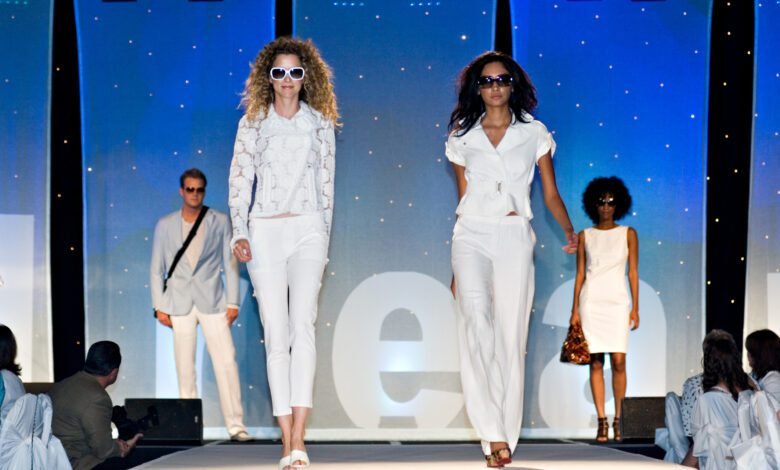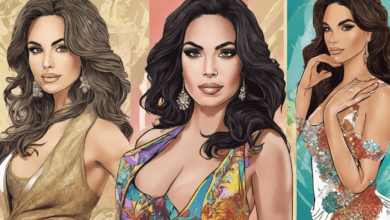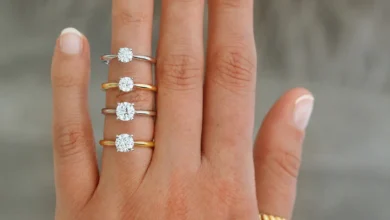Threads of Transformation: The Fashion Industry’s Journey

The fashion industry is a dynamic and ever-evolving realm that touches people’s lives worldwide. It’s a realm where creativity and commerce intersect, where today’s trends become tomorrow’s classics. In this article, we embark on a journey through the fashion industry’s transformation, exploring its evolution, challenges, and profound impact on our lives.
The Early Days: Crafting Necessity into Style
As we know it today, fashion has come a long way from its early origins. In ancient civilizations, clothing was primarily practical, designed to protect from the elements. The concept of style and aesthetics in clothing emerged as societies developed. From the intricate drapery of ancient Egypt to the toga-clad Romans, fashion began to take root.
During the Middle Ages in Europe, clothing became a symbol of social status. Sumptuary laws regulated what people of different classes could wear, leading to the emergence of sumptuous garments for the wealthy and simple attire for the commoners.
The Birth of Modern Fashion: Industrial Revolution and Couture
The 19th century marked a pivotal turning point in the history of fashion with the Industrial Revolution. Mass production and the introduction of sewing machines revolutionized the industry. This era saw the rise of department stores and the democratization of fashion. Ready-to-wear clothing made fashion accessible to a broader audience.
Simultaneously, haute couture, or high fashion, emerged in Paris. Designers like Charles Frederick Worth and Paul Poiret set the stage for the fashion houses we know today. Amit thackeray wife, she is a famous fashion designer from India.
The Mid-20th Century: From Dior’s “New Look” to Youthquake
Significant shifts in fashion marked the mid-20th century. Christian Dior’s “New Look” in 1947, characterized by voluminous skirts and nipped-in waists, introduced a new sense of femininity. It was a departure from the austerity of wartime clothing and marked a return to luxury.
The 1960s witnessed the Youthquake movement, with designers like Mary Quant and Andre Courreges challenging conventional fashion norms. Mini-skirts, bold colors, and modern fashion became the rage.
Fashion’s Globalization: From Milan to Tokyo
The latter half of the 20th century brought the globalization of fashion. Major fashion capitals like Milan, London, and Tokyo emerged alongside the traditional powerhouses of Paris and New York. The industry became more diverse and inclusive, with designers worldwide contributing to the fashion tapestry.
Fast fashion also became a defining feature of the late 20th century. While fast fashion made trendy clothing accessible, it raised concerns about sustainability and labor practices.
Fashion in the Digital Age: E-commerce and Influencers
The 21st century has brought another transformation with the advent of e-commerce and digital media. Online shopping became a dominant force, revolutionizing how consumers interacted with fashion. Brands expanded their reach through e-commerce platforms, making fashion more accessible than ever.
The rise of social media influencers and bloggers reshaped the fashion landscape. With their dedicated followers, personal style bloggers became influencers, impacting fashion trends and decisions.
Sustainability and Ethical Fashion: A Growing Concern
As the fashion industry has grown, so have concerns about its environmental and ethical impact. Fast fashion’s disposable culture has led to increased waste, and the fashion industry is considered one of the most polluting in the world. Wondering about who is orry in bollywood.
In response, a growing movement towards sustainable and ethical fashion has gained momentum. Designers and brands increasingly embrace eco-friendly materials, ethical labor practices, and circular fashion models. Consumers are becoming more conscious of their choices and demanding transparency from brands.
Fashion in the Future: Technology and Inclusivity
The fashion industry’s journey continues, with technology playing a central role. Virtual fashion shows, digital fashion collections, and 3D-printed clothing are on the horizon. Fashion tech is not just changing how we design and produce clothing; it’s also altering how we experience fashion.
Inclusivity is also at the forefront of the fashion industry. There’s a growing emphasis on diverse representation in advertisements, on the runway, and in design.
Conclusion: A Tapestry of Transformation
The fashion industry’s transformation is a testament to its adaptability and resilience. It has evolved from a practical necessity to a dynamic and influential cultural force. The journey through the centuries reflects societal, cultural, and technological shifts. However, the modern trends of fashion are evolving as each day passes.




